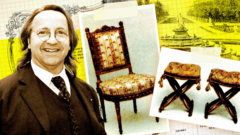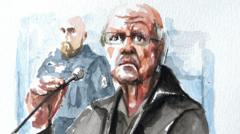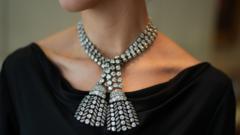Two renowned experts in the antiques field were recently tried for orchestrating a fraudulent scheme that involved selling counterfeit chairs claimed to have belonged to the Palace of Versailles, resulting in significant financial deception within the art world.
Deception Unveiled: The Furniture Fraud Scandal That Rocked Versailles

Deception Unveiled: The Furniture Fraud Scandal That Rocked Versailles
A remarkable case of forgery has exposed the vulnerability of the French antiques market, involving the sale of fake royal furniture to powerful buyers.
In the early 2010s, two exquisite chairs, allegedly once gracing the historic Palace of Versailles, made their debut in the French antiques realm. These chairs, believed to be among the priciest crafted for the infamous Marie Antoinette, bore the prestigious seal of acclaimed cabinetmaker Nicolas-Quinibert Foliot. In a remarkable turn of events, the French government declared them "national treasures" in 2013, following a request from Versailles itself. However, an exorbitant asking price thwarted the palace's attempt to acquire the pieces, leading to their sale to Qatari Prince Mohammed bin Hamad Al Thani for an astounding €2m (£1.67m).
In recent years, the antiques market has witnessed an influx of 18th-century royal furniture, including other purported treasures linked to both Marie Antoinette and King Louis XVI's circle. The palace managed to secure many of these items, while a few, including one chair, found a home among the affluent Guerrand-Hermès family. Yet, by 2016, the charm of these royal chairs devolved into a national scandal that would send shockwaves through France's antique community. The troubling revelation? They were all forgeries.
The scandal led to the prosecution of prominent antiques expert Georges "Bill" Pallot and award-winning cabinetmaker Bruno Desnoues on charges of fraud and money laundering, culminating from a grueling nine-year investigation. Accusations also implicated Galerie Kraemer and its director, Laurent Kraemer, for selling some of the dubious chairs, an accusation they adamantly contest.
Pallot, who earned a reputation as a top scholar on 18th-century chairs and frequently consulted for Versailles, described in court how the forgery scheme began as a lighthearted challenge in 2007 with Desnoues to replicate a historical armchair. From that seemingly innocent start, they advanced to creating an array of convincing fakes, expertly aging wood, gilding, and manufacturing facsimile stamps from revered craftspersons of the time.
These counterfeit chairs were sold through intermediaries to high-profile galleries, ultimately reaching notable auction houses like Sotheby's of London and Drouot of Paris. Pallot and Desnoues confessed to profiting approximately €700,000 from their deception, although investigators estimate that their earnings could exceed €3m. This illicit operation was unveiled after authorities stumbled upon the lavish lifestyle of a Portuguese middleman, tying him back to the fraud.
While some original defendants faced dropped charges, Laurent Kraemer and his gallery maintained ongoing charges of gross negligence, purportedly failing to validate the authenticity of the pieces before resale. Prosecutors underscored the pressing need for enhanced regulations in the art market to prevent similar incidents from reoccurring, casting a shadow of suspicion over the standards prevailing among antique dealers.
Amid the trial, lawyers for Galerie Kraemer defended their client as a victim rather than an accomplice, asserting that the gallery could not have known the furniture was forged. As the court deliberates, the implications of this case extend beyond just a financial scandal; it raises broader questions regarding the integrity and oversight necessary in the antiquities sector, leaving observers eager for the upcoming judgment.



















